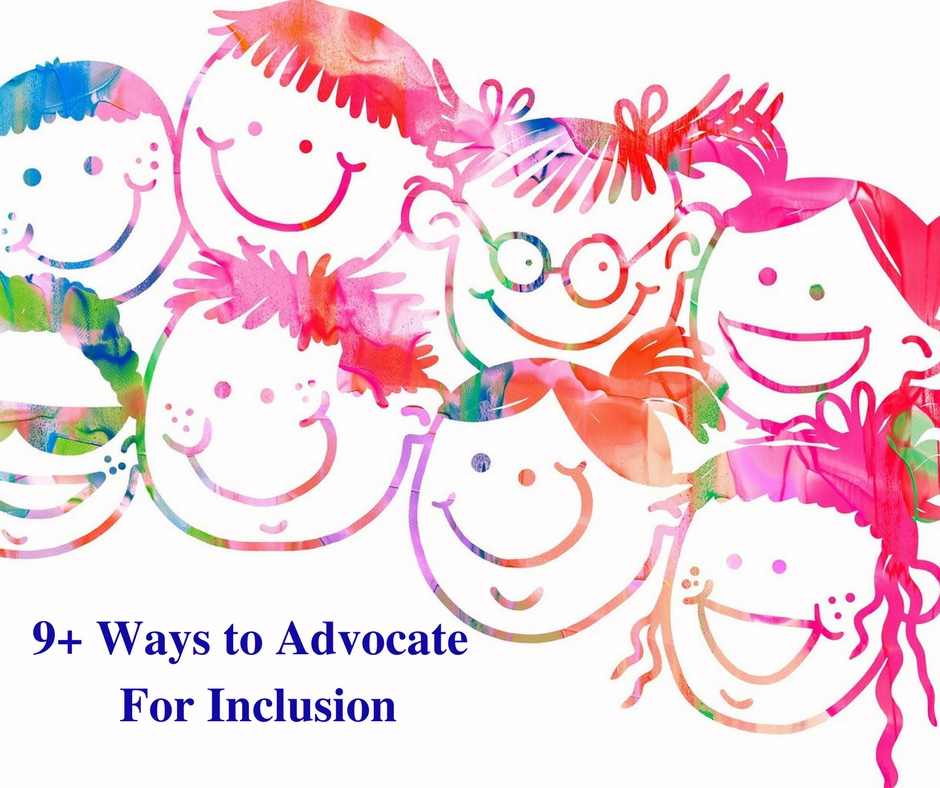9 Ways to Advocate For Inclusion
9+ Ways to Advocate For Inclusion
Click Here To Watch The Full Blogcast
On the go? Click Here To Listen To The Full Blogcast
When I was a special education and classroom teacher, making accommodations and modifications for my students was one of my favorite things to do. Then when our son Dylan started going to school I would help the staff think of ways we could have him participate in the class activities.
Dylan happens to have Down syndrome and when he started elementary school, fully including students in general education classes was not being practiced. However, with accommodations, modifications, and supportive teachers he was successfully included.
In your child’s IEP, one of the sections is for Accommodations and/or Modifications. We want to have appropriate accommodations and modifications that are individualized for your child, written in the IEP. Let’s take a quick look at the differences between modifications and accommodations.
Modifications change the “What” a student is learning. A student working on modified work is going to be doing a different level of work than his/her peers. Please remember, students that need modified work can still be included in general education classrooms.
On the 32nd episode of The Art of Advocacy live show, our guest, Nicole Eredics talked about modifications and showed some specific examples. If you missed that video, you can watch it here
While modifications change “what” the child is learning, accommodations change the “How”. Accommodations are changes in how a student is taught information and how a student shows what he/she learned. Accommodations don’t change the instructional level, the content, or performance criteria for meeting the grade level standards.
There are five common types of accommodations:
- Environmental,
- Presentation,
- Response,
- Quantity,
- Time.
1. Examples of environmental accommodations are preferential seating and alternative work locations. CAUTION: Preferential seating needs to be explained when it is written in your child’s IEP. Some students need preferential seating because they need to be close to the board, other students may need preferential seating because they need to sit at the back of the room where it is quieter. As with everything written in your child’s IEP, it needs to be specific and individualized to your child’s unique needs.
2. Presentation accommodations change how your child is presented new information or taught new skills. If your child is more of a visual learner, visual accommodations can be considered – daily visual schedules, visual cues paired with oral directions, using graphic organizers, etc.
3. Response accommodations change how your child will show the teacher what he/she has learned. Instead of writing a 5 page essay about Egypt, your child could be given other choices to show what he/she learned about Egypt: make a PowerPoint, act out a skit, design a board game, or other ways.
4. Quantity accommodations are ones that reduce the number of items that the learner is expected to learn or number of activities the learner will complete. A student could be assigned less math problems to do for homework, or only be responsible for completing work and class and not being assigned homework.
5. Time accommodations are when a student is given extra time to complete class work or tests. It’s important that the specific amount of extra time is given for assignments so everyone is on the same page and there are no surprises when work is to be completed.
I want to share a terrific resource with you. Click on this link http://cspeda.com/wp-content/uploads/2017/04/modifications-and-supports.pdf
to get 100+ ideas for modifications and accommodations.
In the Facebook live show I took everyone on a shopping trip to a local office supply store. I showed examples of how to take simple office supplies and use them as fun accommodations for your child. It’s a little difficult to explain all the office supplies and ideas of how to use them in a blog post. I encourage you to watch the 34 minute video to see what was shared. Click on this link
After you’ve watched the video, my challenge for you is to begin looking at things from a different angle – see new possibilities. This is just not for how we can use office supplies in different ways, but also how we view our kids. We want others to know our children are capable when given the proper supports.
I leave you with this quote from Carol Thomlinson, “The one thing I want us to remember is, “What we share in common makes us human. How we differ makes us individuals.”
As an advocate my goal is to have you accept what is right for your child. I’m here to help you have that happen!
Take care,
Charmaine
P.S. Next week we’re going to be talking more about how to help your child be included in the general education class. Until next Thursday, at 7:00 Mtn. time, go out and see things differently and know your child is capable!

